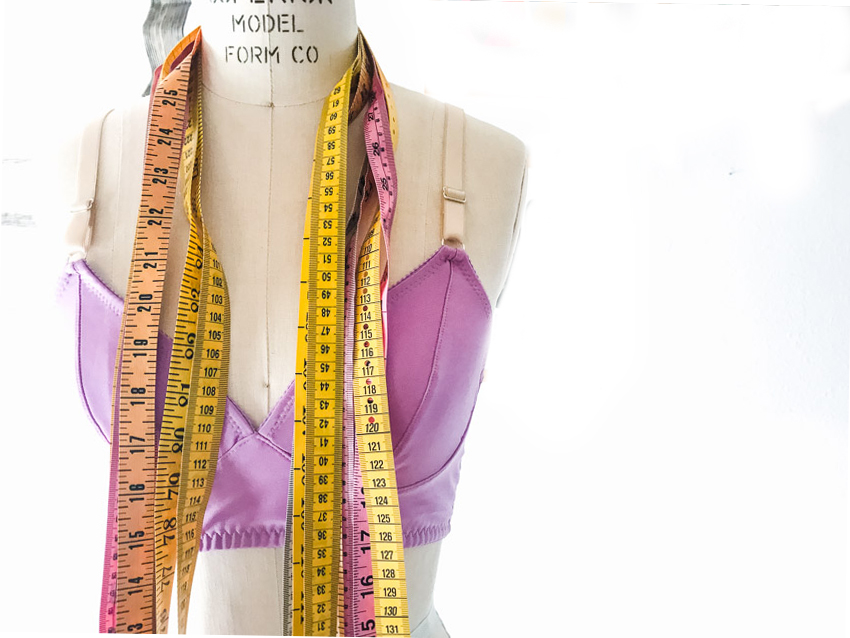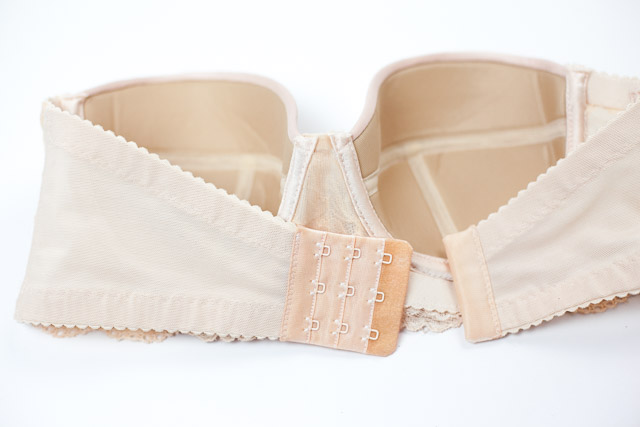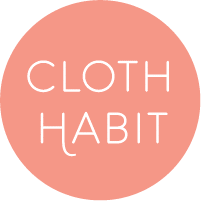
One of the the greatest pleasures in bra making is discovering just how easy they are to sew.
But bra fitting? That’s a whole ‘nother story.
We’ve all been there with bra measuring: take two or three measurements, punch those numbers into a really simple calculation and voila, out comes a bra size. If only bra fitting were so simple!
These kind of calculations throw darts in the general vicinity of what could fit (that’s why we patternmakers use them!), but they can’t possibly ever hit the bullseye. (Am I using a really bad metaphor here?)
If my emails are any judge of this, I think a lot of us get hung up on bra sizes. We worry about cutting the “wrong size” or whether or not a pattern is our “usual size”. We want to know how British compares to American compares to Australian compares to Argentinian sizing. (By my last count, there were over 10 different national size systems in retail.) We freak out if the cup letter ever creeps above a D cup.
So here are my very humble two cents: No one is wearing the “wrong size” or the “right size” or the “average size”. No one is a “B cup” or a “38D”.
None of us are sizes—we wear them.
Sizes are just organizational systems. They aren’t bodies. They are letters and numbers that help us organize different measurements. Those systems can have slight differences from brand to brand or pattern to pattern. Sizes evolve because patterns and fabrics and bodies and even fashions evolve.
Far more important than size is how a bra fits you, and how you want to feel in that bra.
If you are just getting started making your own bras, here’s what I suggest:
1. Your measurements are just a place to start
Most bra patterns including mine will give you a few measurements to take around the circumference of your body. Take these measurements, do the size calculation, and remember this gives you a starting point. It’s not an exact science, nor should it be.

2. Follow the pattern’s measurement guide
Any good bra pattern will have a measuring guide that helps you select a size from your measurements. Since every pattern and patternmaker has a slightly different approach to bra drafting and sizing, follow that pattern’s size suggestion for your measurements.
My biggest tip here: when measuring your underbust to find a band size, hold the tape firmly around your torso. (The underbust is the area right under your breasts.) Judging by the bras I have fit, I think a lot of women take this measurement loosely and as a result end up with a band this is too big.
As you get more skilled you will often be able to choose a pattern by doing some quick measurements or test cups, but it’s often hard to tell how a bra will fit until the entire bra is finished.
3. Treat Your First Bra Like a muslin
In my bra classes I like to have students make two bras. We practice sewing on the first one and then have a bra that we can use for fitting. Any time I make a new pattern I usually go through a bra or two until I’m happy!
Once you get the hang of sewing bras you can easily cut, sew and finish a bra in one afternoon. Don’t worry about wasting fabric or time. It’s worth using up a few extra materials to get what you want.
You will possibly make a few bras that don’t fit but that, my sewing friends, is all part and parcel of learning to make bras. (Unless you are one of those blessed unicorns for whom everything fits right out of the box. But most of us, including myself, don’t have that blessing!)
4. Your fit needs will change
And what I mean by this is, your body will change. Bodies and breasts change far more frequently than we care to admit! I tend not to notice until I put on a bra and suddenly something doesn’t feel right.
Pregnancy, post-pregnancy, menstruation, menopause, the smallest weight gain or loss, a bit more muscle, or lymphatic sensitivity, etc. can all change the size and tenderness of your breasts. Occasionally you just need to re-measure yourself or try a different size in a pattern. That’s part of being a real, live, squishy body!
